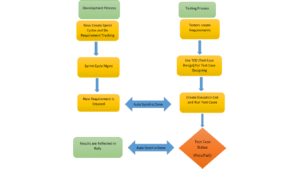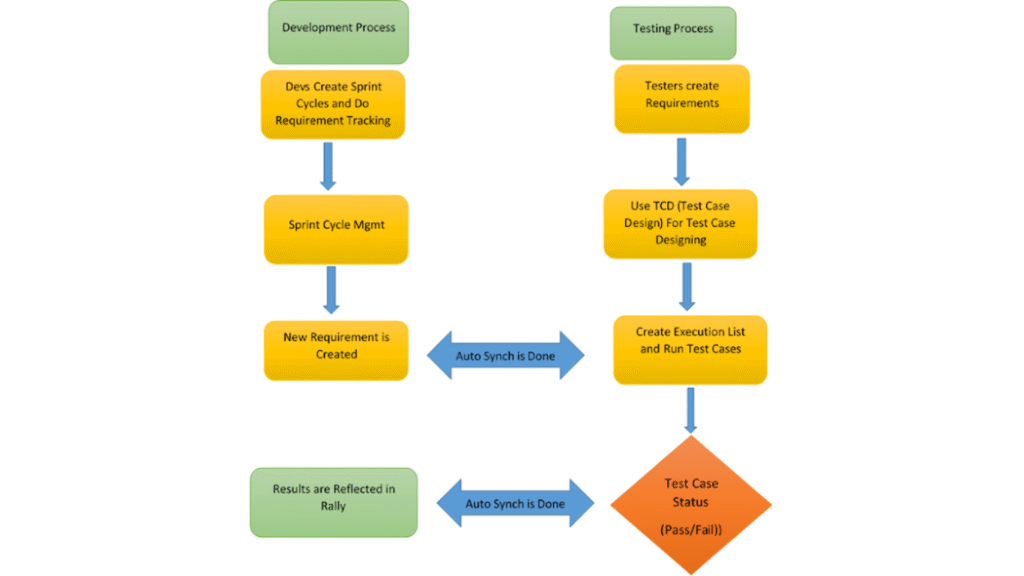A Data Scientist is responsible for extracting, manipulating, pre-processing, and producing predictions out of data. So, to do such tasks, he requires a comfortable environment to work with. In this article, we will discuss the best python IDEs utilized by Data Scientists to do their data tasks. We will comprehend the key highlights of the python IDEs, the benefits they give, and the examination of different data science tools.
What is an IDE ?
IDE stands for Integrated Development Environment. It’s a coding tool which allows you to write, test, and debug your code more efficiently, as they typically offer code completion or code insight by highlighting, resource management, debugging tools
Because of all the features that python IDEs have to offer, they are extremely useful for development: they make your coding more comfortable and this is no different for data science. However, given the fact that there aren’t only the traditional IDEs to consider, but also new tools, such as notebooks.
Why should we use an IDEs ?
For instance, imagine that you are coding in any text editor like windows notepad. When your code is ready, you’ll need to run it. You can’t execute your program in a text editor like this, so you must use a prompt command to do it. Rather than use two different programs, it would be comfortable to have it all in just one place. That’s where an python IDE comes in handy.
You might be wondering which IDE to use when you’re just starting with data science.
Jupyter Notebook is the best choice………..
The Jupyter Notebook
The Jupyter Notebook is an open-source web application that allows you to create and share documents that contain live code, equations, visualizations, and narrative text. Uses include data cleaning and transformation, numerical simulation, statistical modeling, data visualization, machine learning, and much more.
Jupyter Notebook provides you with an easy-to-use, interactive data science environment across many programming languages that doesn’t only work like an IDE, but also as a presentation or educational tool. It’s perfect for those who are just starting out with data science!
The following are the main advantages of Jupyter Notebook
Language of choice
Jupyter supports over 40 programming languages, including Python, R, Julia, and Scala.
Share notebooks
Notebooks can be shared with others using email, Dropbox, GitHub, and the Jupyter Notebook Viewer.
Interactive output
The Jupyter Notebook supports markdowns, allowing you to add HTML components from images to videos.
Communicate your results with visualization
For instance, you can use data visualization libraries like Matplotlib and Seaborn and show your graphs in the same document where your code is.
Besides all of this, you can export your final work to PDF and HTML files, or you can just export it as a .py file. In addition, you can also create blogs and presentations from your notebooks.
Try Jupyter
You can try Jupyter out right now, without installing anything. Select an example from the link given below and you will get a temporary Jupyter server just for you, running on mybinder.org. If you like it, you can install Jupyter yourself.
Link for trying Jupyter Notebook: https://jupyter.org/try
How to install Jupyter Notebook
There are multiple Jupyter user interfaces one can use, based on their needs
Prerequisite: Python
While Jupyter runs code in many programming languages, Python is a requirement for installing the Jupyter Notebook. We recommend using the Anaconda distribution to install Python and Jupyter.
Installing Jupyter using Anaconda and conda
For new users, we highly recommend installing Anaconda. Anaconda conveniently installs Python, the Jupyter Notebook, and other commonly used packages for scientific computing and data science.
Installing Jupyter with pip
As an existing Python user, you may wish to install Jupiter using Python’s package manager, pip, instead of Anaconda.
First, ensure that you have the latest pip; older versions may have trouble with some dependencies:
pip3 install --upgrade pip
Then install the Jupyter Notebook using:
pip3 install Jupyter
Jupyter Notebook Basics
The Notebook dashboard
When you first start the notebook server, your browser will open to the notebook dashboard. The dashboard serves as a homepage for the notebook. Its main purpose is to display the notebooks and files in the current directory
To create a new notebook, click on the “New” button at the top of the list and select a kernel from the dropdown. Which kernels are listed depend on what’s installed on the server.
Notebooks and files can be uploaded to the current directory by dragging a notebook file onto the notebook list or by the “click here” text above the list.
The notebook list shows green “Running” text and a green notebook icon next to running notebooks
Overview of the Notebook UI
If you create a new notebook or open an existing one, you will be taken to the notebook user interface (UI). This UI allows you to run code and author notebook documents interactively. The notebook UI has the following main areas:
- Menu
- Toolbar
- Notebook area and cells
The notebook has an interactive tour of these elements that can be started in the “Help: User Interface Tour” menu item.
Edit mode
Edit mode is indicated by a green cell border and a prompt showing in the editor area:
Command mode
Command mode is indicated by a grey cell border with a blue left margin:
When you are in command mode, you can edit the notebook as a whole, but not type into individual cells.
Mouse navigation
All navigation and actions in the Notebook are available using the mouse through the menubar and toolbar, which are both above the main Notebook area:
Running Code
The notebook is capable of running code in a wide range of languages. However, each notebook is associated with a single kernel. This notebook is associated with the IPython kernel, therefore runs Python code.
Code cells allow you to enter and run code¶
Run a code cell using Shift-Enter or pressing the Play button in the toolbar
These are some basic functionalities of the Jupyter Notebook. If you want to learn more you can list the official website and have a look at them
Here is the Link:
The Jupyter Notebook — Jupyter Notebook 6.1.3 documentation
Other IDE Alternatives To Consider
Spyder
If you have the Anaconda distribution installed on your computer, you probably already know Spyder. It’s an open-source cross-platform IDE for data science. If you have never worked with an IDE, Spyder can also be a perfect start. It integrates the essentials libraries for data science, such as NumPy, SciPy, Matplotlib, and IPython, besides that, it can be extended with plugins.
Downloading Spyder is free and it’s available for Windows, macOS, and major Linux distributions, like Debian, Fedora, and Ubuntu. You can install Spyder by downloading Anaconda.
PyCharm
PyCharm is an IDE made by the folks at JetBrain, a team responsible for one of the most famous Java IDEs, the IntelliJ IDEA.
PyCharm is perfect for those who already have experience using another JetBrain’s python IDE because the interface and features are similar. Also, if you like IPython or Anaconda distribution, it’s nice for you to know that PyCharm integrates its tools and libraries such as NumPy and Matplotlib, allowing you to work with array viewers and interactive plots.
Atom
Atom is an open-source text editor developed by Github. That sounds great, right?. That’s exactly what Atom is.
Although this text editor is available for many popular programming languages such as Ruby on Rails, PHP, Java, and so on, Atom has interesting features that create a good experience for Python developers. One of the best advantages of Atom is its community, chiefly due to the constant enhancements and plugins that they develop in order to customize your IDE and improve your workflow.

























